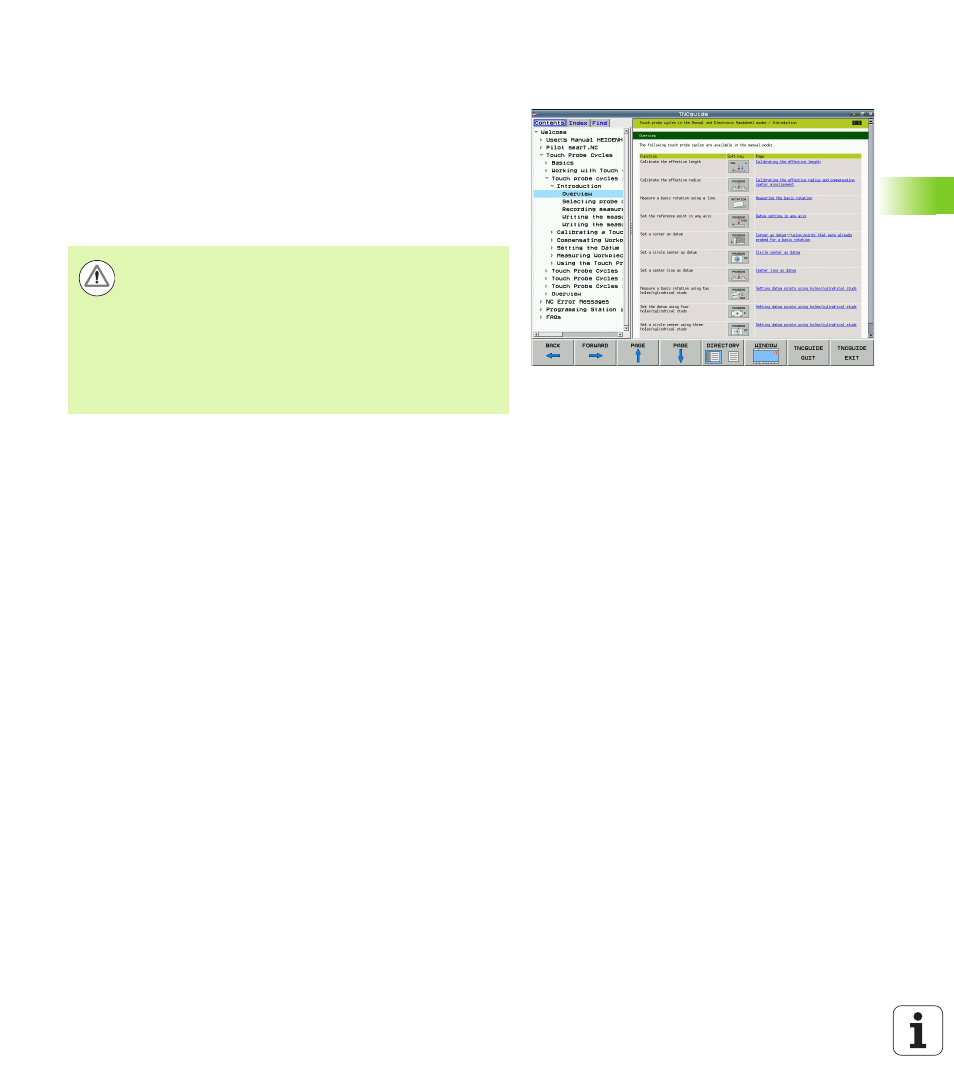Working with the tncguide – HEIDENHAIN iTNC 530 (60642x-03) ISO programming User Manual
Page 163

HEIDENHAIN iTNC 530
163
4.8 The cont
ext-sensitiv
e help syst
em TNCguide (FCL3 function)
Working with the TNCguide
Calling the TNCguide
There are several ways to start the TNCguide:
Press the HELP key if the TNC is not already showing an error
message
Click the help symbol at the lower right of the screen beforehand,
then click the appropriate soft keys
Use the file manager to open a help file (.chm file). The TNC can
open any .chm file, even if it is not saved on the TNC’s hard disk
For many soft keys there is a context-sensitive call through which you
can go directly to the description of the soft key’s function. This
functionality requires using a mouse. Proceed as follows:
Select the soft-key row containing the desired soft key
Click with the mouse on the help symbol that the TNC displays just
above the soft-key row: The mouse pointer turns into a question
mark
Move the question mark to the soft key for which you want an
explanation, and click: The TNC opens the TNCguide. If no specific
part of the help is assigned to the selected soft key, the TNC opens
the book file main.chm, in which you can use the search function
or the navigation to find the desired explanation manually
Even if you are editing an NC block, context-sensitive help is available:
Select any NC block
Use the arrow keys to move the cursor to the block
Press the HELP key: The TNC starts the help system and shows a
description for the active function (does not apply to miscellaneous
functions or cycles that were integrated by your machine tool
builder)
If one or more error messages are waiting for your
attention, the TNC shows the help directly associated
with the error messages. To start the TNCguide, you first
have to acknowledge all error messages.
When the help system is called on the programming
station or the dual-processor version, the TNC starts the
internally defined standard browser (usually the Internet
Explorer), and on the single-processor version a browser
adapted by HEIDENHAIN.
